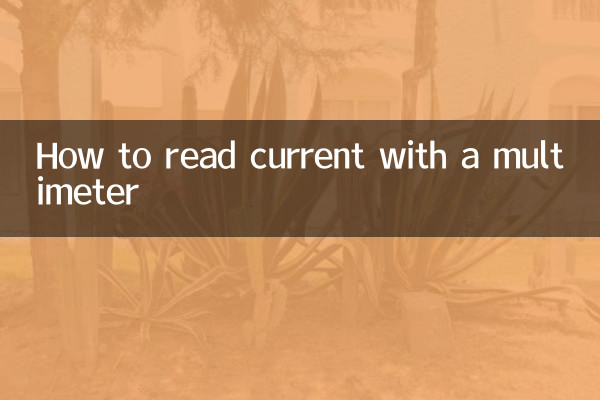How to read current with a multimeter
In electronic engineering and circuit repair, a multimeter is one of the essential tools. Knowing how to properly use a multimeter to measure current and get accurate readings is an essential skill for every technician and hobbyist. This article will introduce in detail the steps, precautions and solutions to common problems of measuring current with a multimeter to help you quickly master this skill.
1. Basic steps for measuring current with a multimeter

1.Choose the right measurement mode: Turn the multimeter knob to the current measurement range (usually marked "A" or "mA"). Note the distinction between direct current (DC) and alternating current (AC) current.
2.Connect test leads: Plug the red test lead into the current measurement jack (usually labeled "A" or "mA") and the black test lead into the COM jack.
3.Disconnect the circuit and connect the multimeter in series: Current measurements require a multimeter in series with the circuit. Disconnect the circuit to be tested and connect the red and black test leads of the multimeter to the two disconnection points of the circuit.
4.Read value: Turn on the circuit power and observe the value on the multimeter display. Pay attention to the unit (A or mA) and the positive and negative signs (for DC current).
2. Things to note when measuring current with a multimeter
1.avoid overload: If the current exceeds the range of the multimeter, the equipment may be damaged. It is recommended to start measuring from the high range first and gradually adjust to the appropriate range.
2.Make sure you connect it correctly: Current measurement must be done in series, parallel connection will cause short circuit or wrong reading.
3.Pay attention to safety: When measuring high current, be sure to wear insulating gloves to avoid electric shock.
3. Common problems and solutions
| question | Possible reasons | Solution |
|---|---|---|
| Reading shows 0 | The circuit is not powered or the multimeter is not connected in series correctly | Check circuit power and multimeter connections |
| Readings are unstable | Poor contact or interference in the circuit | Reconnect the test leads and make sure the contact is firm |
| Reading out of range | The current is too large or the range selection is too small. | Switch to a higher range or use a clamp meter to measure |
4. Practical skills for measuring current with multimeter
1.Use a clamp meter to measure large currents: For large currents (such as above 10A), it is recommended to use a clamp meter, which can be measured without disconnecting the circuit.
2.Record measurement data: Measure and record data multiple times, averaging to improve accuracy.
3.Calibrating a multimeter: Calibrate the multimeter regularly to ensure the accuracy of the measurement results.
5. Summary
Properly using a multimeter to measure current requires mastering basic steps and precautions. With the introduction in this article, you should be able to easily make current measurements and get accurate readings. If you encounter problems in actual operation, you can refer to frequently asked questions and solutions, or consult professionals.
Mastering the skills of using a multimeter can not only improve work efficiency, but also ensure safe operation. Hope this article helps you!

check the details

check the details